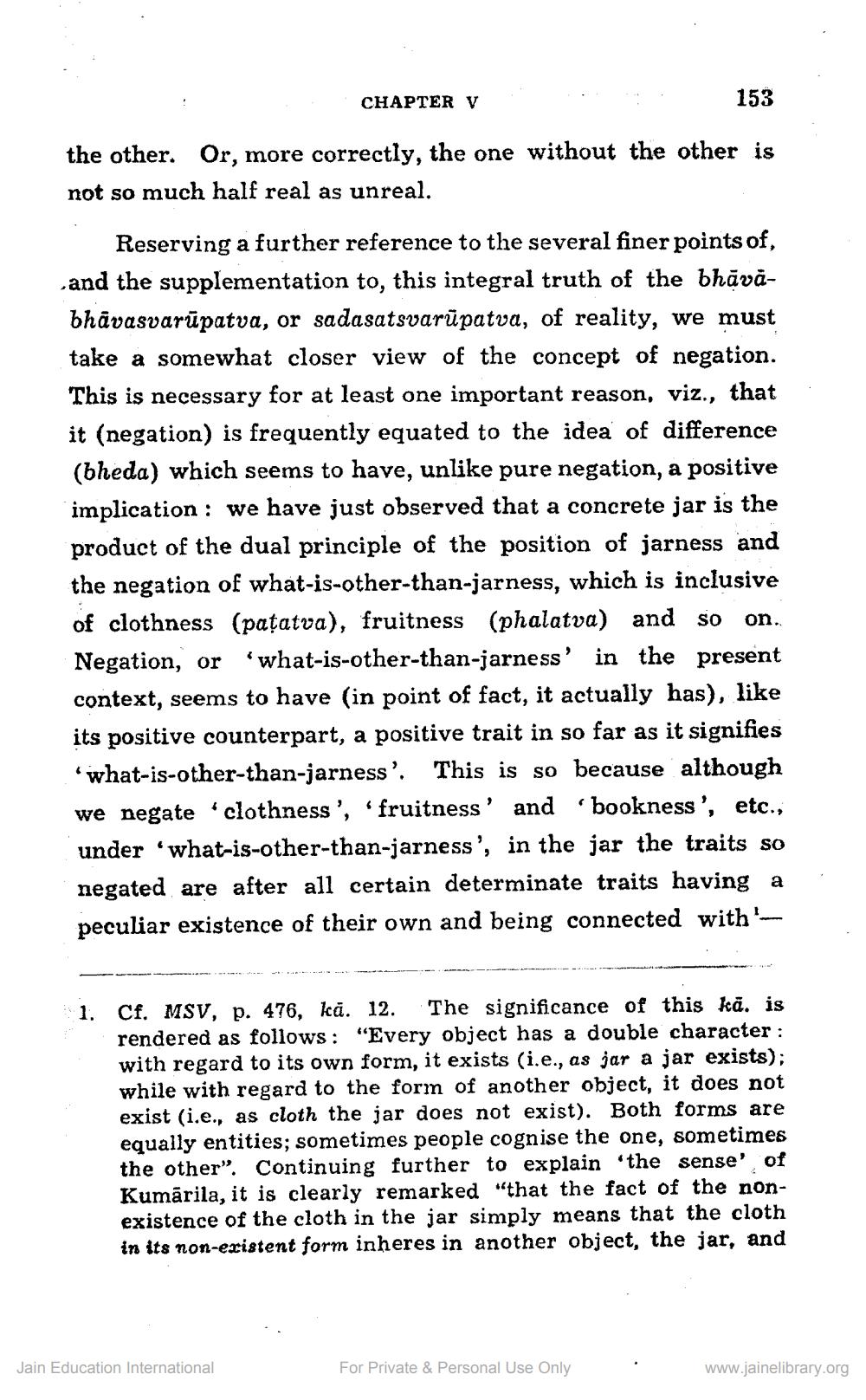________________
CHAPTER VI
E
153
the other. Or, more correctly, the one without the other is not so much half real as unreal.
Reserving a further reference to the several finer points of, and the supplementation to, this integral truth of the bhāvābhāvasvarūpatva, or sadasatsvarūpatva, of reality, we must take a somewhat closer view of the concept of negation. This is necessary for at least one important reason, viz., that it (negation) is frequently equated to the idea of difference (bheda) which seems to have, unlike pure negation, a positive implication : we have just observed that a concrete jar is the product of the dual principle of the position of jarness and the negation of what-is-other-than-jarness, which is inclusive of clothness (pațatva), fruitness (phalatva) and so on. Negation, or 'what-is-other-than-jarness' in the present context, seems to have (in point of fact, it actually has), like its positive counterpart, a positive trait in so far as it signifies
what-is-other-than-jarness'. This is so because although we negate clothness', 'fruitness' and 'bookness', etc., under 'what-is-other-than-jarness', in the jar the traits so negated are after all certain determinate traits having a peculiar existence of their own and being connected with
1. Cf. MSV, p. 476, kā. 12. The significance of this kā. is
rendered as follows: "Every object has a double character : with regard to its own form, it exists (i.e., as jar a jar exists); while with regard to the form of another object, it does not exist (i.e., as cloth the jar does not exist). Both forms are equally entities; sometimes people cognise the one, sometimes the other". Continuing further to explain the sense' of Kumārila, it is clearly remarked "that the fact of the nonexistence of the cloth in the jar simply means that the cloth in its non-existent form inheres in another object, the jar, and
Jain Education International
For Private & Personal Use Only
www.jainelibrary.org




